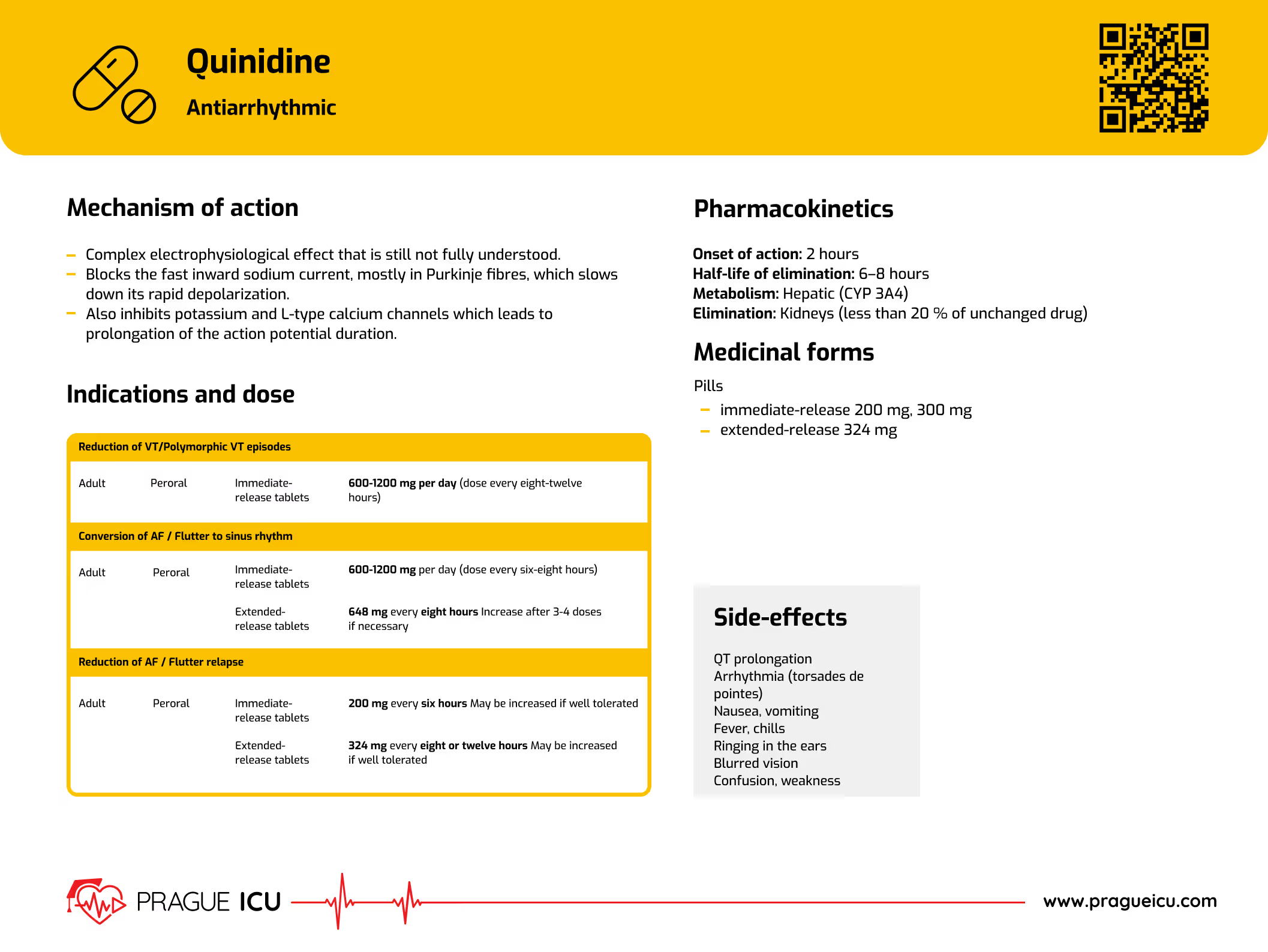
Quinidine (Cardioquin, Serecor)
Mechanism of action
- Complex electrophysiological effect that is still not fully understood.
- Blocks the fast inward sodium current, mostly in Purkinje fibres, which slows down its rapid depolarization.
- Also inhibits potassium and L-type calcium channels which leads to prolongation of the action potential duration.
Indications and dose

Pharmacokinetics
Onset of action: 2 hours
Half-life of elimination: 6–8 hours
Metabolism: Hepatic (CYP 3A4)
Elimination: Kidneys (less than 20 % of unchanged drug)
Directions for administration
Patients should not drink grapefruit juice while taking this medication.
ECG monitoring of possible QT interval prolongation should be done when giving quinidine long term.
Medicinal forms
Pills
- immediate-release 200 mg, 300 mg
- extended-release 324 mg
Side-effects
QT prolongation
Arrhythmia (torsades de pointes)
Nausea, vomiting
Fever, chills
Ringing in the ears
Blurred vision
Confusion, weakness
References
- Quinidine: Uses, Interactions, Mechanism of Action | DrugBank Online
- Quinidine - StatPearls - NCBI Bookshelf (nih.gov)
- Quinidine Uses, Side Effects & Warnings - Drugs.com
- Quinidine: MedlinePlus Drug Information



